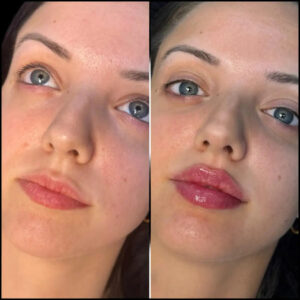
Step outside, and your skin meets the sun in seconds. Even brief exposure can lead to redness, irritation, or lasting marks for individuals with sensitive skin. You’re not alone if you’ve ever felt stinging after a walk or spotted rashes after sunlight. This is where sunblock for sensitive skin steps in.
Sunblock doesn’t only prevent tanning or sunburn. It shields your skin from deep damage that builds quietly over time. In this blog, we’ll explore why daily use of broad-spectrum sunblock matters, how it works, what to look for, and how it fits into a gentle skincare routine.
Why Sunlight Harms Sensitive Skin?
Sunlight carries two types of ultraviolet (UV) rays: UVA and UVB. While UVB causes sunburn, UVA penetrates deeper. It weakens skin layers, speeds up ageing, and triggers pigmentation.
Sensitive skin reacts faster to these rays. Instead of tanning, it burns or flares up. For individuals with rosacea, eczema, or dry patches, the discomfort can feel more severe.
Additionally, sunlight dries out the skin, making it more susceptible to itching or cracking. Even cloudy days let in enough UV rays to cause harm. That’s why experts urge people with sensitive skin to wear protection every day, not just on holidays.
What Makes Broad-Spectrum Sunblock Different?
Not all sunblocks guard your skin in the same way. Some protect only from UVB, but broad-spectrum types block both UVA and UVB rays.
This kind gives your skin full coverage and peace of mind. It prevents sunburn and reduces the risk of:
- Age spots
- Fine lines
- Uneven skin tone
- Inflammation
- Skin cancer
For sensitive skin, this wide shield is essential. It avoids flare-ups and protects delicate cells beneath the surface.
Benefits of Broad-Spectrum Sunblock for Sensitive Skin
Sunblocks made for sensitive skin often skip harsh chemicals. They lean on gentle minerals like zinc oxide or titanium dioxide. These sit on the skin and reflect sunlight like a mirror.
Here’s what you gain by using them daily:
1. Calm and Steady Skin Tone
- No more sudden patches or redness. Your skin stays even and fresh.
2. Reduced Inflammation
- The right sunblock soothes skin and keeps heat-triggered reactions low.
3. Lower Risk of Pigmentation
- Sensitive skin marks easily. Sunblock helps stop those marks from forming or deepening.
4. Extra Barrier Against Pollution
- Many broad-spectrum creams also guard against smoke and dirt in the city air.
How to Pick the Right Sunblock for Your Skin?
Choosing sunblock isn’t about grabbing the highest SPF. You need something that protects and respects your skin.
What to Look For:
- Labelled for Sensitive Skin
- Avoid fragrances, alcohol, and dyes.
- Mineral-Based Ingredients
- Zinc oxide and titanium dioxide are safe bets.
- Non-Comedogenic
- This means it won’t clog your pores.
- Broad-Spectrum Label
- Ensures you get both UVA and UVB protection.
- SPF Between 30 and 50
- Enough for daily use without overwhelming your skin.
Common Sunblock Types for Sensitive Skin
Before you buy, compare what each sunblock type offers. This table makes it easier:
| Type | Main Ingredient | Works How? | Best For |
| Physical Sunblock | Zinc/Titanium | Reflects UV rays | Very sensitive or dry skin |
| Chemical Sunblock | Avobenzone, etc. | Absorbs UV rays | Less reactive skin types |
| Tinted Sunblock | Iron oxides | Adds skin tone protection | Uneven skin or redness |
| Water-Based Gel | Light filters | Gentle hydration + UV | Oily or acne-prone skin |
How Sunblock Works with Organic Make Up in Singapore?
In Singapore’s humid air, layering skincare and makeup feels tricky. But sunblock remains the one layer you must not skip. Luckily, many local organic make up Singapore brands now create products that work in harmony with sensitive skin sunblock.
These brands offer lightweight formulas that sit smoothly on top of mineral sunblock. No peeling, no white cast. Just comfort and coverage. Some even blend SPF into foundations or powders, adding another layer of protection.
Pairing sunblock with organic makeup gives you full-day defence—without weighing you down.
How to Apply Sunblock the Right Way?
Even the best sunblock won’t be effective if used incorrectly. Many people apply too little or put it on too late.
Here’s how to get it right:
- Use two finger-lengths of product for your face and neck.
- Apply 15 minutes before stepping outside.
- Reapply every two hours if you’re outdoors.
- Use it every day, even indoors near windows.
Pro Tip:
Apply sunblock as the last step of your morning skincare. Let it sink in before adding makeup.
When Should You Start Wearing Sunblock?
The short answer: Skin begins reacting to sunlight from childhood. The earlier you protect it, the better it will age.
Even if you’re in your 20s or 30s, sunblock still helps reverse some damage. For sensitive skin, each day without sunblock adds stress. Daily use lets your skin reset and heal from past exposure.
How to Pair Sunblock with a Skincare Routine?
Sensitive skin loves consistency. Here’s a simple day routine that works well with sunblock.
Daily Routine for Sensitive Skin + Sunblock
| Step | What to Use | Purpose |
| Cleanse | Mild, fragrance-free cleanser | Removes dirt without irritation |
| Tone | Alcohol-free toner | Soothes skin, balances pH |
| Moisturise | Lightweight cream | Seals in hydration |
| Sunblock | Broad-spectrum SPF 30–50 | Shields from UV and pollution |
| Makeup | Organic or mineral makeup | Adds coverage without clogging |
What Happens When You Skip Sunblock?
Some people think sunblock matters only on hot days. But UV rays don’t stop when the skies turn grey.
Without sunblock, sensitive skin faces:
- Faster ageing
- Visible dark spots
- Thin, damaged skin barrier
- Increased redness and breakouts
If you’ve worked hard to fix your skin with serums or treatments, one day without sunblock can undo the progress.
Real-Life Signs Your Skin Needs Protection
Not sure if you need sunblock? These are early warnings:
- Red cheeks after walking in mild sun
- Skin that itches or flakes by evening
- Dark patches that don’t fade
- A stinging feeling when applying products
These signs show sun stress. A good sunblock soothes and shields at the same time.
Common Myths About Sunblock
Let’s clear up a few things:
“I have darker skin, so I don’t need it.”
False. All skin tones need protection from UVA.
“Sunblock causes breakouts.”
Only if you pick the wrong one. Look for “non-comedogenic.”
“I get enough SPF from my makeup.”
Most makeup has low SPF and doesn’t cover fully. Use sunblock first.
Final Thoughts: Your Skin Deserves Daily Defence
Your skin faces light, heat, dirt, and stress every single day. Sensitive skin reacts faster and heals slower. That’s why daily protection matters.
Using broad-spectrum sunblock for sensitive skin benefits you in more ways than one. It keeps your skin calm, clear, and ready to face the world. When paired with a simple routine and organic make up Singapore products, your skin stays safe and strong—no matter the weather.




